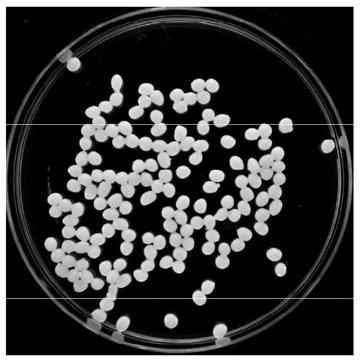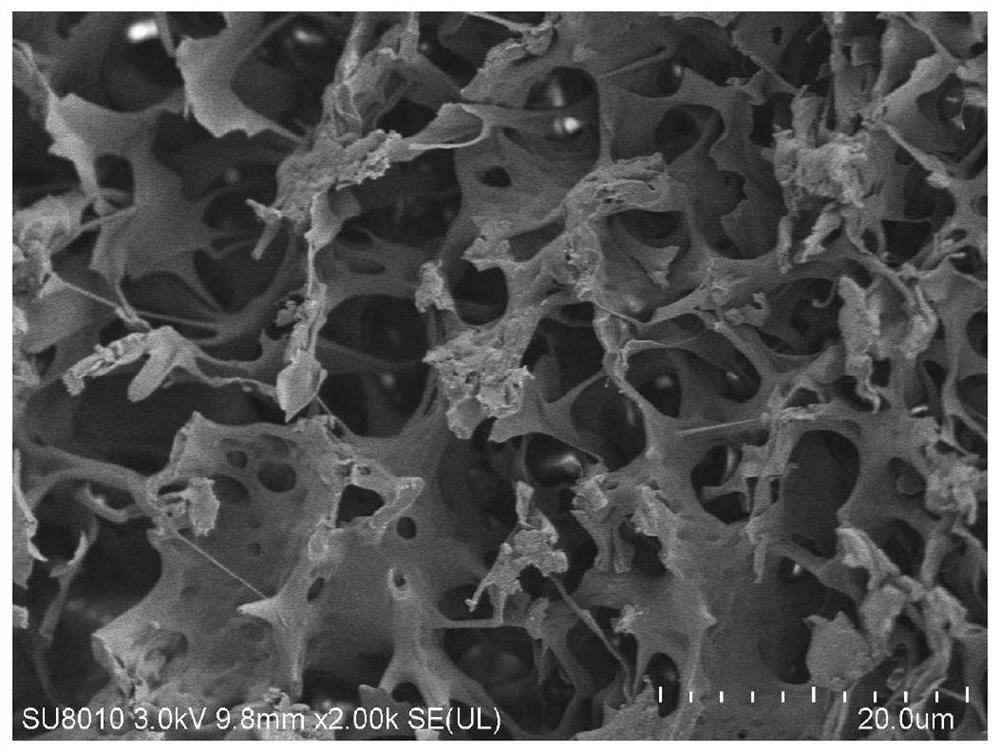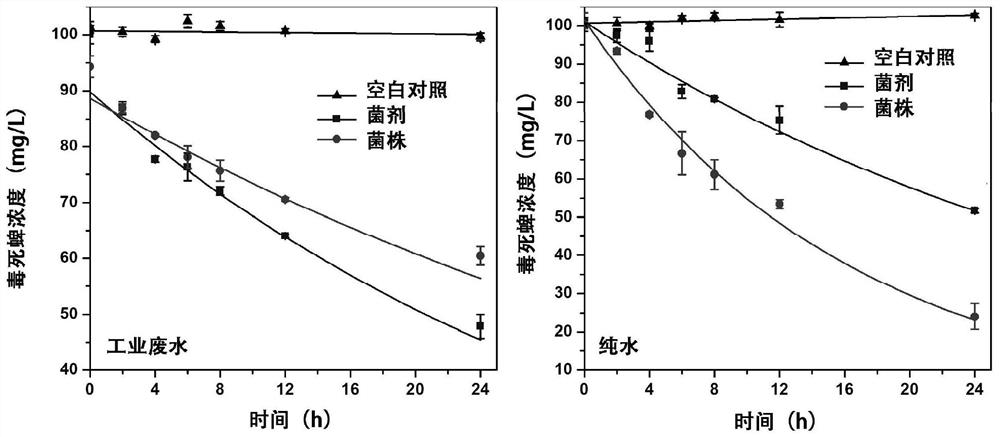Microbial inoculum for degrading organophosphorus insecticide as well as preparation method and application of microbial inoculum
A pesticide and organophosphorus technology, applied in the field of bioremediation of pesticide pollution, can solve the problems that degrading strains are difficult to directly use in-situ repairing and affect the degradation activity of degrading strains, and achieve strong biocompatibility, improved tolerance, The effect of reducing the toxic effect
- Summary
- Abstract
- Description
- Claims
- Application Information
AI Technical Summary
Problems solved by technology
Method used
Image
Examples
Embodiment 1
[0047] Example 1 Preparation of bacterial agents for degrading organophosphorus pesticides
[0048] 1. Pick a ring of strain X1 from the cryopreservation tube, streak it in LB solid medium, and incubate in a constant temperature incubator at 37°C for 24 hours. Pick a single colony and place it in 100mL LB liquid medium, and shake it at 140r / min at 37°C for 12h to obtain a bacterial suspension. The cells were collected by centrifugation at 6000 r / min for 5 min, and washed three times with sterile water to obtain the wet cells of Copperophilus taiwanensis X1. The content of Copperophilus Taiwan X1 in the obtained wet thallus was 10 9 CFU / g.
[0049] 2. Dissolve 1 g of chitosan in 100 mL of 0.05 mol / L dilute hydrochloric acid, add 2 g of diatomaceous earth, stir at room temperature for 1 h, adjust the pH of the solution to neutral with 0.05 mol / L NaOH, collect the precipitate by centrifugation, and dry Grinding and passing through a 200-mesh sieve to obtain a chitosan-diatomit...
Embodiment 2
[0072] Example 2 Degradation of bacterium to chlorpyrifos in pure water and industrial wastewater
[0073] 1g was added to 20mL of pure water containing 100mg / L chlorpyrifos and industrial waste water (taken from the waste water of a pesticide production enterprise in Weifang, Shandong Province, the water quality index is as follows:
[0074] COD: 32500mg / L, BOD 5 : 13000mg / L, Zn 2+ : 84.5mg / L, Pb 2+ : 74.4ug / L, Cd 2+ : 9.3ug / L, NH 3 -N: 55500 mg / L, pH 9.2), cultured in a shaker at 150 r / min at 37°C for 24 hours with constant temperature shaking, and took samples every 2 hours to determine the residual concentration of chlorpyrifos.
[0075] The result is as image 3 As shown, the prepared bacterial agent can maintain good degradation efficiency no matter in pure water or in high-concentration industrial wastewater, and can degrade 50% of 100mg / L chlorpyrifos within 24 hours.
Embodiment 3
[0076] Example 3 Repeated use of bacterial agents
[0077] Add 1 g of the bacterial agent prepared according to the optimal ratio of Example 1 into 20 mL of pure water containing 20 mg / L chlorpyrifos, and culture in a shaker at 150 r / min at 37° C. for 24 hours to sample and determine the residual concentration of chlorpyrifos. Filter the used bacterial agent, wash it 3 times with sterilized water, add it into 20mL pure water containing 20mg / L chlorpyrifos again, measure its degradation effect, repeat several times.
[0078] The result is as Figure 4 As shown, after repeated 2 times, the degradation rate of chlorpyrifos remained above 90.0%; after repeated 6 times, the degradation rate of chlorpyrifos remained stable above 60%.
[0079] The bacterial agent prepared in Example 1 can still maintain degradation activity after being stored at room temperature for 30 days.
PUM
| Property | Measurement | Unit |
|---|---|---|
| particle diameter | aaaaa | aaaaa |
Abstract
Description
Claims
Application Information
 Login to View More
Login to View More - R&D
- Intellectual Property
- Life Sciences
- Materials
- Tech Scout
- Unparalleled Data Quality
- Higher Quality Content
- 60% Fewer Hallucinations
Browse by: Latest US Patents, China's latest patents, Technical Efficacy Thesaurus, Application Domain, Technology Topic, Popular Technical Reports.
© 2025 PatSnap. All rights reserved.Legal|Privacy policy|Modern Slavery Act Transparency Statement|Sitemap|About US| Contact US: help@patsnap.com



